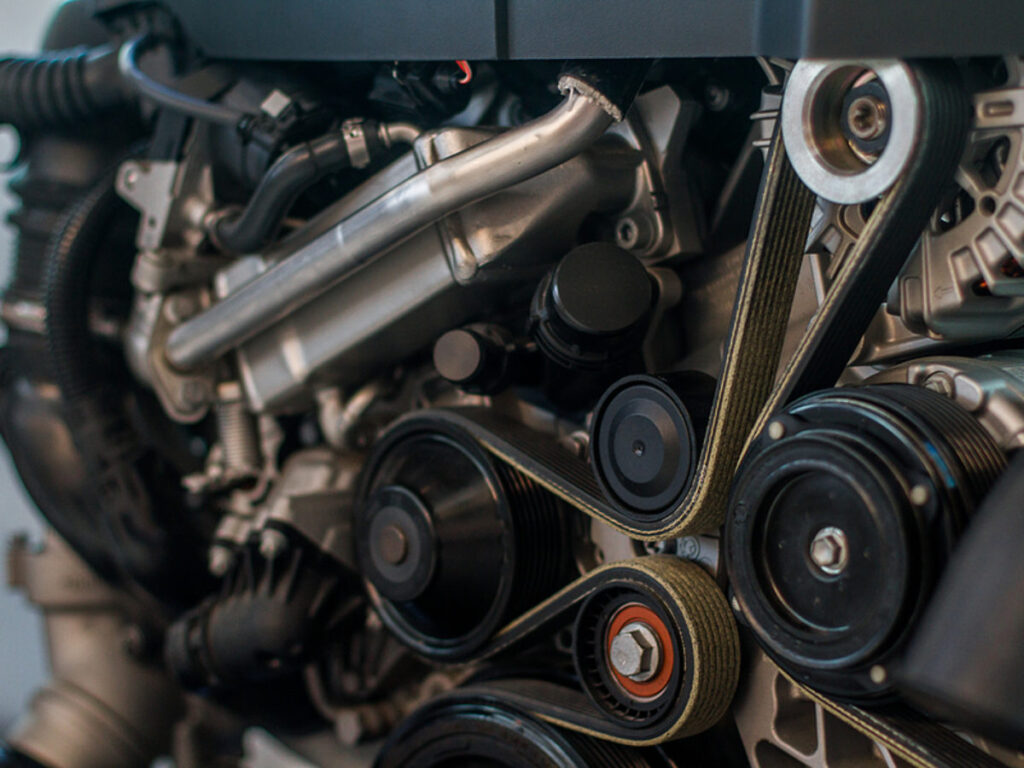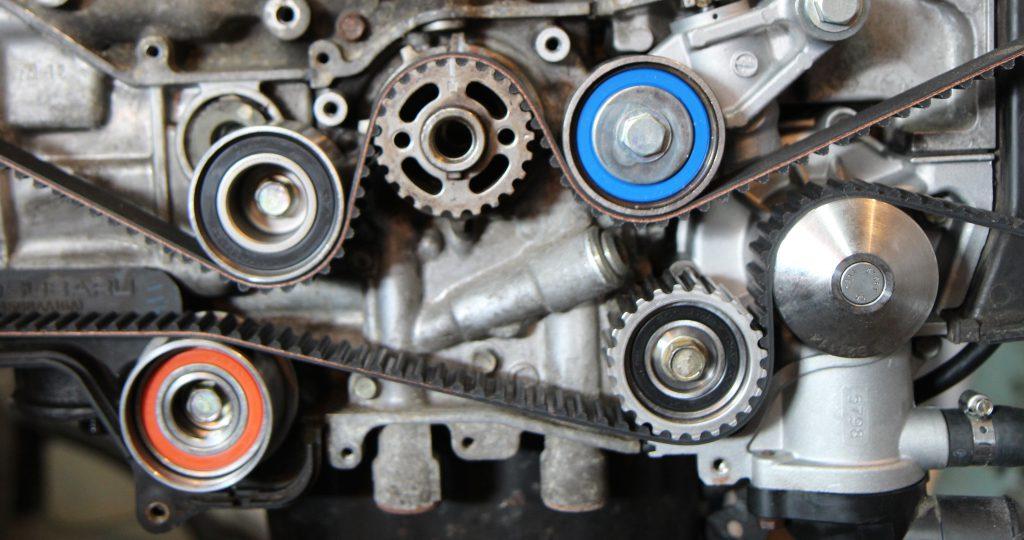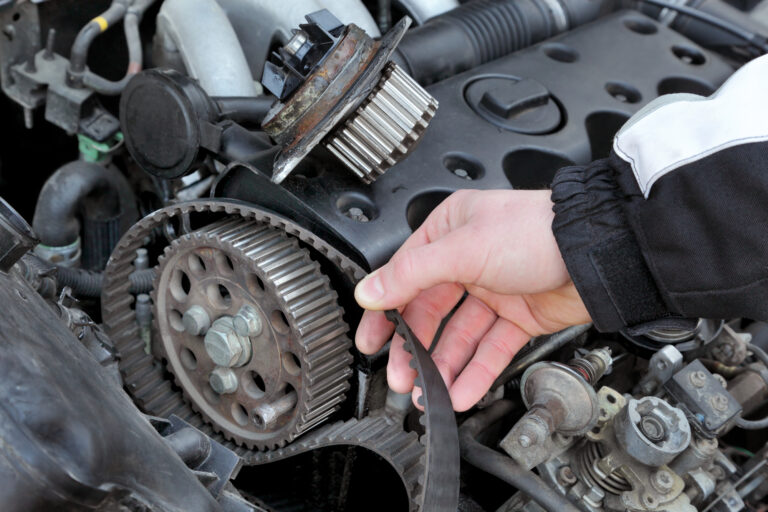The alternator belt powers the vehicle’s electrical systems, while the timing belt synchronizes the engine’s crankshaft and camshaft for proper valve and piston timing.
Both are crucial but serve different functions in your vehicle’s operation.
Belts play a crucial role in the functioning of a vehicle’s engine. These unassuming components transfer power from the engine to various vital systems within the vehicle.
Without them, your car wouldn’t be able to operate efficiently, if at all. In this blog post, we’ll explore the significance of belts in your vehicle’s engine and show you the differences between two main types: alternator belts and timing belts.
Alternator Belt: What You Need to Know
Definition and purpose of the alternator belt
The alternator belt is a crucial component in your vehicle’s engine. Its primary purpose is to transfer mechanical power from the engine’s crankshaft to the alternator responsible for generating electricity.
This electricity powers the vehicle’s electrical systems and charges the battery, ensuring a steady supply of electrical energy for various functions, including lights, radio, air conditioning, and more.
How the alternator belt functions in the vehicle’s electrical system
The alternator belt plays a vital role in the vehicle’s electrical system by connecting the crankshaft to the alternator pulley. As the engine runs, it turns the crankshaft, which, in turn, rotates the alternator pulley through the alternator belt.
The alternator converts This rotational energy into electrical power, supplying electricity to the battery for storage and distribution to all electrical components.
Without a functioning alternator belt, your vehicle’s electrical systems would quickly drain the battery, leading to a breakdown.
Signs of a worn or damaged alternator belt
It’s essential to know signs indicating that your alternator belt may be worn or damaged. Common signs include:
Squealing or squeaking noises: A high-pitched squeal when you start the engine or while driving can be an early sign of belt wear.
Visible wear and cracks: Inspect the belt for visible signs of wear, such as cracks, fraying, or glazing. A damaged belt can lead to reduced performance and increased wear on other components.
Dimming lights or electrical issues: If your lights flicker, your radio cuts out, or you experience other electrical problems, it could be due to a failing alternator belt.
Battery warning light: A lit battery warning light on your dashboard clearly indicates a potential issue with the alternator belt or the alternator itself.
Key Differences Between Alternator Belts and Timing Belts

Materials and construction of each type of belt
Alternator Belt:
- Material: Alternator belts are typically made of a durable rubber compound with embedded cords or fibers for strength.
- Construction: They are usually flat or serpentine-shaped and are designed for flexibility to transmit power from the engine’s crankshaft to the alternator.
Timing Belt:
- Material: Timing belts are commonly constructed from rubber with reinforcement materials like fiberglass or kevlar for added strength.
- Construction: Timing belts have a toothed or cogged design with precisely spaced teeth along the inner surface. These teeth mesh with corresponding gears on the camshaft and crankshaft to maintain synchronization.
Functions and roles in the vehicle’s operation
Alternator Belt:
- Function: The primary function of the alternator belt is to transfer mechanical power from the engine’s crankshaft to the alternator, generating electricity for the vehicle’s electrical systems.
- Role: It ensures a continuous supply of electrical energy, allowing various components like lights, radios, and HVAC systems to function.
Timing Belt:
- Function:
- The timing belt’s main role is to make sure the engine’s valves and pistons work together smoothly by keeping the crankshaft and camshaft synchronized.
- Role: It plays a critical role in the engine’s combustion process, controlling the opening and closing of valves for proper air-fuel mixture and exhaust.
How does the failure of each belt type affect the vehicle
Alternator Belt Failure:
Consequences: A failed alternator belt can lead to a discharged battery, causing electrical system malfunctions, dimmed lights, and potential engine stalling.
Drivability: While the vehicle may still run, operating without essential electrical functions can be challenging.
Timing Belt Failure:
- Consequences: A failed timing belt can result in catastrophic engine damage, including bent valves, damaged pistons, and costly repairs.
- Drivability: The engine may not start or will run poorly if the timing belt fails. In some cases, it can cause a complete engine breakdown.
Maintenance and replacement procedures for both belts
Alternator Belt:
- Maintenance: Alternator belts should be inspected regularly for signs of wear and replaced as needed, typically every 25,000 to 50,000 miles or as the manufacturer recommends.
- Replacement: Replacement involves loosening the tensioner pulley, removing the old belt, and installing a new one with proper tension.
Timing Belt:
- Maintenance: Timing belts have specific replacement intervals recommended by the manufacturer, typically ranging from 60,000 to 100,000 miles. Regular inspection is essential to identify signs of wear.
- Replacement: Replacing a timing belt is a more complex and labor-intensive procedure. It often involves removing engine components and ensuring precise alignment of the crankshaft and camshaft.
Cost considerations and labor involved in replacements
Alternator Belt:
Cost: Replacing an alternator belt is relatively inexpensive, with the cost primarily associated with the belt itself.
Labour: Labor costs are generally lower due to the simplicity of the replacement process, making it an affordable maintenance task.
Timing Belt:
Cost: Timing belt replacement can be more expensive due to the higher-quality materials used and the complexity of the procedure.
Labor: Labor costs are typically higher due to the more involved process, which may require disassembling engine parts.
Can You Replace the alternator belt On Yourself?

DIY replacement for alternator belts
Replacing an alternator belt is a task that can often be undertaken by DIY enthusiasts with basic automotive knowledge and tools. Here are some points to consider:
Simplicity: Alternator belt replacement is relatively straightforward compared to other engine components. It typically involves loosening the tensioner pulley, removing the old belt, and installing the new one.
Tools: You’ll need basic tools like wrenches and a serpentine belt tool to complete the job.
Cost: DIY alternator belt replacement is cost-effective since the main expense is the cost of the belt itself.
Maintenance Schedule: Regular inspections and timely replacement can help prevent unexpected breakdowns.
The complexity of timing belt replacement and the need for professional service
Timing belt replacement is a significantly more complex task that often requires professional service. Here’s why:
Engine Disassembly: Replacing a timing belt typically involves disassembling parts of the engine, including the timing cover and sometimes the water pump, to access the belt.
Precise Alignment: Proper alignment of the crankshaft and camshaft is critical. A minor misalignment during replacement can lead to severe engine damage.
Specialized Tools: Specialized tools and knowledge are required to ensure correct timing and tension.
Cost: While DIY enthusiasts may attempt timing belt replacement, the complexity and potential risks make it a task better suited for professional mechanics. The cost of a professional service is a safeguard against costly engine damage.
Safety considerations and potential risks associated with DIY replacements
When considering DIY belt replacement, especially for timing belts, it’s essential to weigh the risks and safety factors:
Risk of Engine Damage: Incorrectly replacing a timing belt can lead to catastrophic engine damage. Bent valves, damaged pistons, or misaligned components can result from errors.
Specialized Knowledge: Timing belt replacement requires a deep understanding of engine mechanics, which most DIYers may not possess.
Safety Hazards: DIY work on a vehicle can pose safety risks. Safety precautions should be taken when working around moving engine parts, and the vehicle should be securely supported.
Warranty Considerations: DIY repairs can void vehicle warranties if not performed correctly.
FAQs
What is the purpose of an alternator belt?
The alternator belt turns the alternator, which makes electricity to charge the battery and run the car’s electrical stuff.
What happens if the alternator belt breaks?
If the alternator belt breaks, the vehicle’s electrical system will no longer receive power, and the battery will eventually run out of charge, leading to a stalled engine.
What is the role of the timing belt in the engine?
The timing belt ensures that the engine’s valves open and close in precise coordination with the movement of the pistons, allowing for proper combustion and engine operation.
Can a broken timing belt damage the engine?
Yes, a broken timing belt can damage the engine because it disrupts the timing of the valve and piston movements, potentially leading to valve-to-piston collisions.
How often should I replace the alternator belt?
The replacement interval for the alternator belt varies by vehicle make and model. Inspecting it regularly and replacing it as part of your vehicle’s maintenance schedule is generally recommended, often every 30,000 to 60,000 miles.
When should I replace the timing belt?
The replacement interval for a timing belt also varies by vehicle. It typically falls between 60,000 and 100,000 miles, but it’s essential to consult your vehicle’s maintenance schedule for specific recommendations.
Can I replace the alternator belt or timing belt myself?
Replacing an alternator belt can be a DIY project for some individuals with basic automotive knowledge and tools. However, replacing a timing belt is more complex and often requires professional expertise due to its critical role in the engine.
How can I tell if my alternator belt is worn or damaged?
Signs of a worn or damaged alternator belt include squealing or chirping noises, visible cracks, fraying, or slack in the belt.
What are the warning signs of a failing timing belt?
Warning signs of a failing timing belt may include rough engine performance, misfires, unusual noises from the engine, or the “Check Engine” light coming on. It’s crucial to address these signs promptly to prevent engine damage.
Conclusion
Ultimately, the alternator belt powers your vehicle’s electrical systems, ensuring a steady electricity supply for various components.
On the other hand, the timing belt synchronizes the crankshaft and camshaft, governing the precise timing of your engine’s valves and pistons.
Understanding these distinctions is crucial for maintaining your vehicle’s reliability and safety.

